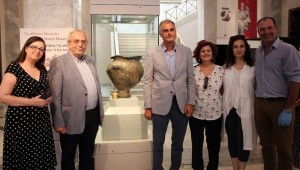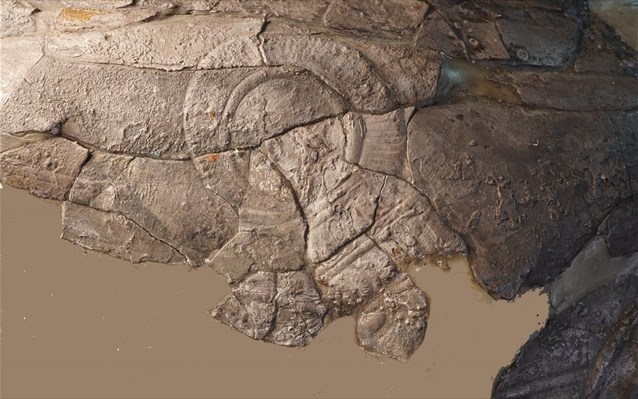Depicts two waring hoplite groups over a fallen warrior
The largest bronze artefact of the Mycenaean era known as the ‘Battle krater’ will be on public display for the first time in 140 years at Athens National Archaeological Museum in the framework of the ‘Unseen Museum’ programme.
The large silver vessel was discovered in the tomb of a prince during excavations carried out by Heinrich and Sophie Schliemann in Mycenae, in 1876. The find was made in the royal tombs within Grave Circle A, where both objects and funeral rites dating back to the 16th century B.C. and previously entirely unknown to archaeologists were discovered.
The largest surviving bronze artefact was eventually reconstructed and the battle depicting two rival hoplite groups fighting over a fallen warrior was restored.
The krater will be on display at the Hall of the Altar until September 25. Culture and Sports Minister Aristidis Baltas, who was shown around the storerooms, was present during the transfer of the find o the museum. On August 7 and 28 and on September 16 and 25, museum archaeologists will be greet visitors and talk about the artefact itself, as well as the rich variety of other grave goods interred alongside it, with that same early Mycenaean-era prince.

source: en.protothema.gr

